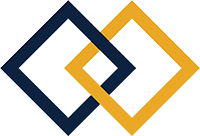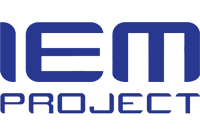Fundamental Principles of Quantum Computers
- by Alex Möllers
This article will give a short insight in the field of quantum computing, where most recent scientific theories are applied in order to revolutionize the IT sector. The idea is to use the properties of so called quanta, which can be imagined as packets of energy (e.g. photons), in order to achieve an immense increase in computational power. Engineers envision that, with a fully functional quantum computer, huge databases could be searched in a second or the quantum world could be simulated. Applications like this would give new insights in, for example, proteins and could lead to groundbreaking developments in medicine, physics, chemistry and many other fields.
To grasp at least a tiny little bit of what is actually going on we should first recall how traditional computers work. They use so called bits which can be set to either 0 or 1, normally they are bundled together and the emerging combinations are the “language” of a computer. All the commands, instructions, numbers, letters etc. are translated into a binary code, in this way an entire program can be represented as a stream of numbers. To visualize that just imagine that for your laptop an “A” is actually “010000001”. Each of these 0s or 1s can be seen as a state of a transistor inside the processor. This transistor is either “on” or “off”. The grouping of these parts into so called logic gates allows the computer to perform calculations or to respond to inputs.
At the moment the best processors have more than 4,3 billion transistors and are operating on atomic level. This means 4,3 billion “switches“ which can be either 0 or 1. However, there are still many mathematical problems left that cannot be solved in a lifetime, not even if all computers in the world would work in tandem. This is why engineers and scientist, actually in this case they are both, try to use the fundamentals of quantum theory to enable a computer to perform many parallel operations.
The most important aspect is the idea of a superposition. To understand this, it is indispensable to know that every quantum has a so called spin. This can be pictured as the direction of a magnetic property of elementary particles. It is defined as the total angular momentum of a body. Every particle can be in a “spin down” or in a “spin up” state. However, in quantum mechanics it is possible that it is in both positions at the same time, this is the so called superposition. Then for every quantum object there is a probability that its spin is up or down. Sounds illogical but is widely accepted.
Let us now think of a way to implement our new knowledge in the design of a computer. Therefore, we should see the quantum objects as bits and the direction of the spin as “0” or “1”. At this point we can apply the property of a superposition! While one normal bit can only be one number at the same time a quantum bit can be 2 numbers. If we now take 4 classical bits, they can be in 16 configurations but only one can be used, for qubits this does not hold. They can be in all of the combinations at once. This number grows exponentially with each extra qubit, so 2^N. Only twenty of them can already store a million values simultaneously.
This is where the enormous computing power of quantum computers comes from. Nevertheless, they only outrun common computers on a limited range of problems. They are only faster when the algorithms can use superposition effectively and because of this they are not to be seen as a replacement for classical computers.













